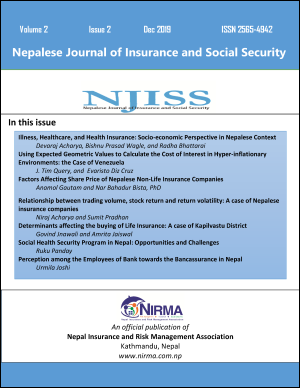Using Expected Geometric Values to Calculate the Cost of Interest in Hyper-inflationary Environments: the Case of Venezuela
Keywords:
Acuatuarial liabilities, Social security, Projected benefit, Macaulay durationAbstract
It is of vital importance to explore the relationship between pensions and inflationary levels because this forms a link between social policy and economic development in the context of Venezuela’s challenging economy and its impact on the development of pension systems. With such rampant inflation, companies must adjust the rates of salary increases to avoid a significant decrease in the purchasing power of income from defined benefit plans. Our research seeks to find the possibility of using an average geometric rate of future interest rates expressed as an expected value to discount obligations. Consequently, the cost of interest associated with the actuarial liability of the Benefit plans increases substantially in the next fiscal period to the actuarial valuation, sometimes compromising its sustainability over time. In order to minimize this problem, two scenarios for calculating the interest rate are proposed to smooth out this volatile effect; both are based on a geometric average with the expectation of working life or with the duration of the obligations. We are careful to use a reasonable interest rate that is not so high as to compromise the cash flow, resulting in skewed annual results of the companies. Our research seeks to find the possibility of using an average geometric rate of future interest rates expressed as an expected value to discount obligations. We formulate and actuarially evaluate two different scenarios, based on job expectations and Macaulay's duration, of the obligations that allow the sustainability of the plan in an environment of extremely high inflation. To illustrate the impact of the basic annual expenditure of the period, the results of an actuarial valuation of an actual Venezuelan company were utilized. Despite some companies adjusting their book reserves increasingly through a geometric progression, the amounts associated with the costs of interest would be huge in any such adjustment pattern. Therefore, we suggest adoption of one of the alternatives described in the research.
Downloads
Downloads
Published
How to Cite
Issue
Section
License
Copyright © Nepal Insurance and Risk Management Association

The articles in NJISS are licensed under a Creative Commons Attribution-NonCommercial 4.0 International License. This CC BY-NC license allows reusers to distribute, remix, adapt, and build upon the material in any medium or format for noncommercial purposes only, and only so long as attribution is given to the creator.
It includes the following elements:
BY - Credit must be given to the creator (authors)
NC - Only noncommercial uses of the work are permitted.

